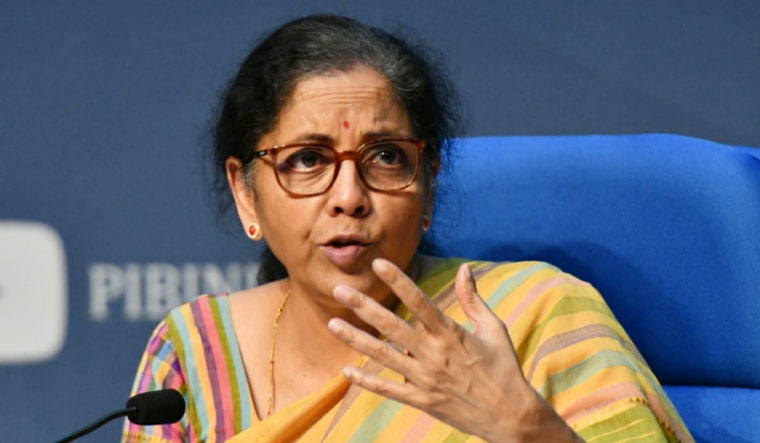India studied the economic packages given by most of the foreign countries before coming out with its own Rs 20 lakh crore package to kickstart the economy as the lockdown was eased. The approach has been to infuse liquidity, so that the companies, institutions, and enterprises, get assistance via bank or other means to restart their businesses, said Finance Minister Nirmala Sitharaman, explaining the thinking behind the government's decisions.
ALSO READ: COVID-19 economic package: Here are Sitharaman's key announcements
The finance minister said Prime Minister Narendra Modi and PMO were consulted to decide the contours of the package. Sitharaman said her focus in preparing the package has not been on giving out relief sectors-wise, but creating avenues where all can get help to be back in business.
Sitharaman was speaking to BJP spokesperson Nalin Kohli in a webinar organised by the party to discuss the government initiatives. The 45-minute 'interview' saw Kohli asking questions on criticism about the package, and Sitharaman answering them.
With the lockdown on, and the social distancing norms dictating the terms of engagements, the political parties have started using webinars to put across their viewpoint. A few days ago, Rahul Gandhi had held webinar with different experts including economists Raghuram Rajan and Abhijit Banerjee.
ALSO READ: Maximum bang for minimum buck: Economists on Centre's stimulus package
On Kohli's question as to why certain sectors were not part of the package announcement, the finance minister said, “That approach (of giving sectorwise relief, for example to autos, or hospitality) has a bit of a problem. We have taken this approach where we did not announce any one sector, except when I was talking about reforms where I spoke about agriculture, or except for infusion in the power sector, which is undergoing reforms. No other sectoral references.
“What is now known as MSME package, includes others, too. It is based on understanding that any enterprise with an exposure to the bank, and with certain invested capital or turnover, if they need a term loan or additional working capital to buy raw material, to restart. I have also made it clear to the bank that this help should be given to anyone who needs it and not just the MSME,” Sitharaman said. “I expect liquidity to flow from June 1, and anyone who need loans can get it.”
“There is reluctance on the part of the banks to give loans because of fear of NPAs, and investigations,” Kohli asked the finance minister.
“The banks' concerns are well founded. I have interacted with them, and the fear of three Cs—CBI, CVC, and CAG—that is often referred to, was discussed threadbare. There were CBI officials and other officials sitting with the bankers discussing where this fear had come from. Subsequently, some orders of the department of financial services issued, which could have caused this confusion, were withdrawn,” Sitharaman said.
She again assured the bankers that if some commercial decision goes wrong when they give loan, they should not worry, if there was no malafide, as the government has said that it will give 100 per cent guarantee. So, they should give loans through automatic route.
Detailing the two packages she announced, the finance minister said when lockdown was first announced, the aim was to let no one go hungry. “When we came to the five-day package, we wanted to keep these principles intact—of PM Garib Kalyan Package—but make sure restart is given the emphasis. Restart, some cash, liquidity in the economy dominated the second package.”
Answering questions on the liquidity heavy package, Sitharaman said, “We studied the economic packages of other countries. Every country has brought in a package which had some monetary, some fiscal, some guarantee, some liquidity. Not everything they have given through the budget. They have also gone through liquidity through central bank. We are not all different from them, proportion may vary.”
She added that the government was able to transfer cash in the hands of people through Jan Dhan account, and have come up with measures which will infuse liquidity into the economy. “This, in turn, will bring money in the hands of the people. This will be create demand, and kickstart the economy.”
Responding to the question on allegations that there was little for the middle class in the package, and also the salaried class, small traders, Sitharaman said that the middle class was there in all the areas that were addressed, be it agriculture, allied sectors, or MSME. “It's not that only in urban areas or formal sector, the middle class is there. We spoke to the RBI to give relief in the EMI, and also for affordable housing, and other means.”
Talking about the help given to the states, Sitharaman said the charge of not helping the states was not fair. She said the government has released adequate funds.



